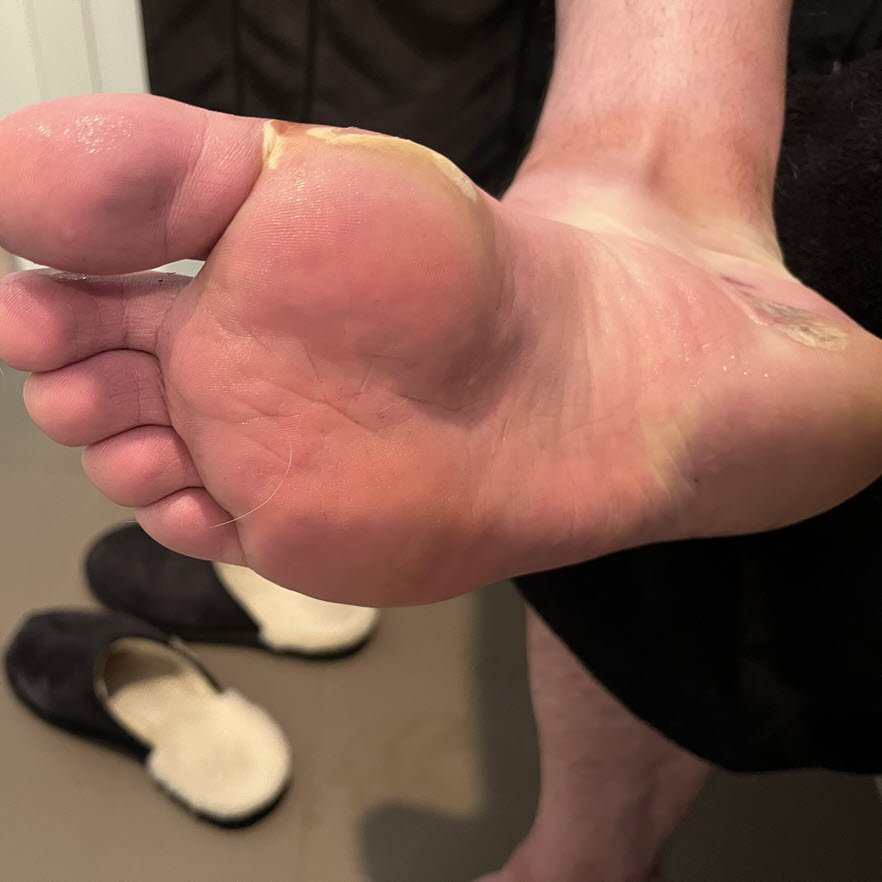Unveiling the Complexities of Excessive Sweating: A Comprehensive Guide to Diagnosis and Management
Extreme sweating, clinically known as hyperhidrosis, is a condition that affects a significant number of individuals and can have an extensive impact on their top quality of life. While sweating is a natural physical feature, its overactivity in hyperhidrosis provides an unique set of challenges that often go beyond mere discomfort.

Comprehending Hyperhidrosis Causes
Hyperhidrosis triggers can be attributed to different factors such as genes, hormone discrepancies, and particular clinical problems. Genetics play a considerable function in primary focal hyperhidrosis, where people inherit the condition from their member of the family. This sort of hyperhidrosis commonly shows up in specific locations like the palms, soles of the feet, underarms, and face. Hormonal discrepancies, especially an over active thyroid gland or menopausal adjustments, can likewise trigger extreme sweating. In addition, particular medical conditions such as diabetes mellitus, heart illness, and infections can cause additional generalized hyperhidrosis. These underlying health issues can disrupt the body's all-natural cooling system, creating the sweat glands to end up being overactive. Recognizing the source of hyperhidrosis is vital in diagnosing and effectively managing this condition. By identifying the particular elements adding to excessive sweating, health care suppliers can tailor therapy strategies to resolve the underlying cause, using alleviation and boosting the quality of life for people impacted by hyperhidrosis.
Identifying Hyperhidrosis Effects

Additionally, hyperhidrosis signs and symptoms may manifest in psychological and social distress, as people may feel embarrassed or nervous about their sweating, causing evasion of social circumstances (Exessive Sweating). In addition, duplicated episodes of excessive sweating can cause skin maceration, fungal infections, and a total decline in self-confidence
Diagnostic Process for Hyperhidrosis
Launching the diagnostic procedure for excessive sweating involves thorough evaluation of the individual's case history and physical examination. Asking about the beginning, period, and causes of sweating episodes is essential to set apart between primary focal hyperhidrosis and second generalized hyperhidrosis. Case history should also include concerns about medications, medical problems, and family members background of hyperhidrosis.
Throughout the physical exam, particular attention is paid to the areas impacted by sweating. The doctor may assess the extent of sweating, look for indicators of underlying conditions, and assess the impact of sweating on the individual's lifestyle. Furthermore, specific examinations like the gravimetric test, starch-iodine test, or skin conductance measurements might be carried out to evaluate the visit the website amount of sweat produced.
In addition, in instances where additional hyperhidrosis is believed, added examinations such as blood examinations, urine examinations, and imaging researches might be suggested to recognize the underlying reason for excessive sweating. The diagnostic procedure intends to precisely figure out the type and source of hyperhidrosis to assist suitable administration techniques.
Therapy Alternatives for Hyperhidrosis
When attending to excessive sweating, different therapy alternatives are offered to alleviate symptoms and boost the individual's high quality of life. The treatment method for hyperhidrosis depends on the severity of symptoms and the client's response to preliminary therapies.
Topical treatments, such as aluminum-based antiperspirants, are frequently recommended as the first line of protection for taking care of moderate cases of hyperhidrosis. For people with more extreme symptoms, dental drugs like anticholinergics might be recommended to assist reduce sweating.

Effective Management Strategies
To properly take care of hyperhidrosis, a personalized and thorough therapy plan tailored to the person's specific needs and action to previous learn this here now treatments is essential. Iontophoresis, involving the usage of a low electric present to reduce sweat gland task, can be valuable for both palmoplantar and axillary hyperhidrosis. A multidisciplinary approach involving skin specialists, primary treatment doctors, and, if essential, specialists, can maximize the monitoring of hyperhidrosis.
Final Thought
Finally, hyperhidrosis is a condition identified by extreme sweating, which can substantially affect an individual's high quality of life. By understanding the reasons, identifying the symptoms, and undergoing the diagnostic process, health care providers can successfully handle this problem. Therapy options consist of topical medicines, dental medicines, injections, and also surgeries in extreme cases. With appropriate medical diagnosis and management approaches, people experiencing hyperhidrosis can locate alleviation and improve their overall health.
Too much sweating, medically recognized as hyperhidrosis, is a problem that affects a significant number of individuals and can have an extensive effect on their high quality of life. By recognizing the certain elements adding to too much sweating, health care companies can customize treatment plans to resolve the underlying cause, using relief and boosting the high quality of life for individuals affected by hyperhidrosis.
Hyperhidrosis, characterized by extreme sweating past what is necessary for managing body temperature level, can substantially impact an individual's top quality of life. Making inquiries concerning the onset, duration, and activates of sweating episodes is important to distinguish between primary focal hyperhidrosis and additional generalised hyperhidrosis. Treatment for hyperhydrosis of hands.In Discover More Here conclusion, hyperhidrosis is a problem defined by extreme sweating, which can significantly influence a person's quality of life